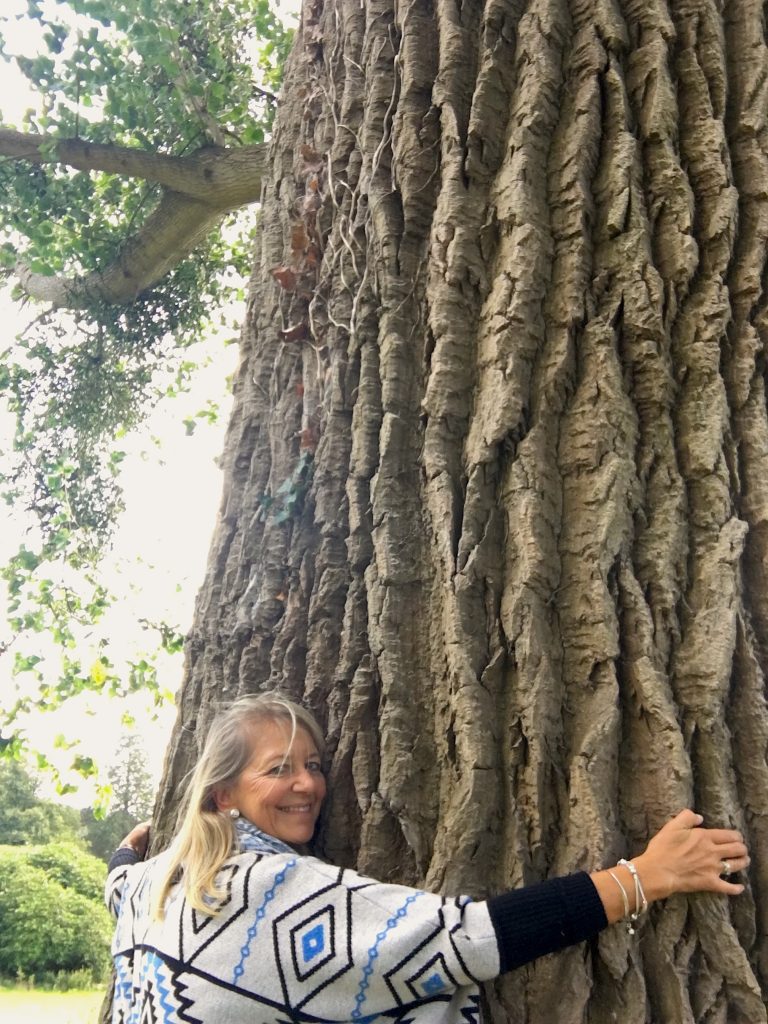Poem for a Tyntesfield Oak Tree
Cousin Sarah came across this poem ‘Inscription for an Oak Tree’ recently while sorting through books and papers cleared from her father Denis Gibbs’ study.
The poem was written by Sir John Coleridge as an inscription for an Oak Tree that William Gibbs planted at Tyntesfield in 1872 to commemorate plans for a Chapel at Keble College, Oxford, for which William offered to fund the building. William states that ‘the idea was given up for reasons which I gave Sir John, in which he concurred’. However, the Chapel at Keble was indeed built, and William Gibbs was the main benefactors, so which ‘idea’ was given up?
Does this Inscription actually exist somewhere in the grounds of Tyntesfield, near to or on, or now inside, an Oak Tree?
The following note was written by William Gibbs and explains why the poem below was written:

Inscription for an Oak Tree, planted
at Tyntesfield by William Gibbs,
October 31st 1872Stand beauteous sapling – flourish strong and fair
And his glad hope fulfill, who set thee here.
To thee the gentlest breeze of spring be given –
Bright suns – soft showers – and the dews of heaven.
Now standing like coy maiden on the green –
One day to be the grove’s majestic Queen.
Long be thy reign – and distant far the day,
That bares thy head uncrowned in slow decay.
We soon must pass away – and sleep in death
Then keep the word, which now to thee we trust,
Tell – truly tell – to each succeeding race
Who gave thee – when – and why – thy chosen place,
Tell of a faithful servant, whose large store
His master largely blessed – but gave him more
And better far – the wise large heart, that found
No joy in hoarded gold – but poured it round,
Still giving – as the plenteous river ran.
Glory to God and blessings rare to Man.
He saw, where youths in saintly Keble’s name
For training pure to ancient Oxford came:
And yearned – his spirit yearned – for them to raise
A not unworthy House of Prayer and Praise.
Ere he began the work in yonder Hall,
We gladly met – obedient to his call.
He asked our counsel – and our prayers be given
Pray we for him – for her – who shared his deed
In heart – and pray we for this latest seed.
Pray, as he most desires, for those to come,
Who in that House of Prayer shall find their home
Best home for joyous spirits – best relief.
When happy youth’s bright eyes are dimmed by grief
Best refuge when temptations round it roll,
Or guilt remembered racks the wounded soul.
And oh – when manhood’s storms are near and rife,
Best shrine to arm the spirit for the coming strife.
The poem was written by John T Coleridge, friend of John Keble. Other names supporting the poem are:
Edward S. Talbot (first Warden of Keble College),
William Butterfield (the Architect for Keble College), and Henry Hucks Gibbs (on Keble College Council and a major donor).
Beautiful verses written by Sir John T Coleridge
Signed: William Gibbs
which he proposed to place near the Oak which,
at his suggestion, I planted at Tyntesfield to commemorate the pleasant meeting which took
place there the 31st October 1872, to discuss the plans of the Chapel which I offered to build at
Keble College, Oxford, but the idea was given up
for reasons which I gave Sir John, in which he concurred.

Sarah noted that she did indeed hug a massive oak tree at Tyntesfield when she visited there not so long ago, but did not come across any indication of an inscription.
A big thank you to Sarah for sharing this story which illustrates the strong links which William Gibbs and his family had with some of the key church figures in England at that time.
